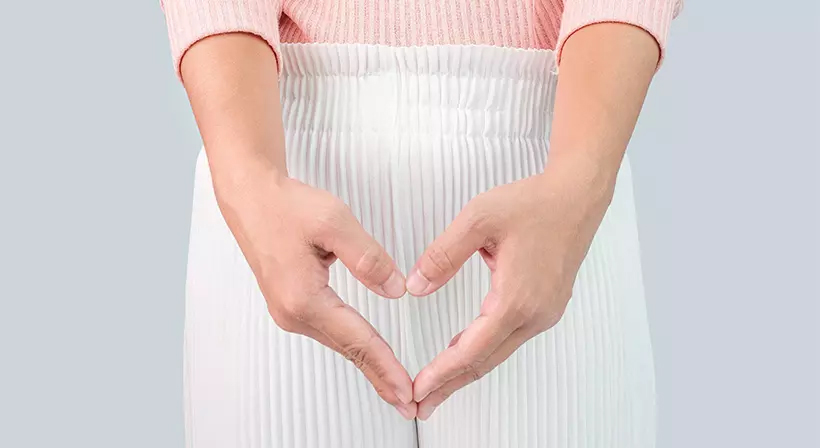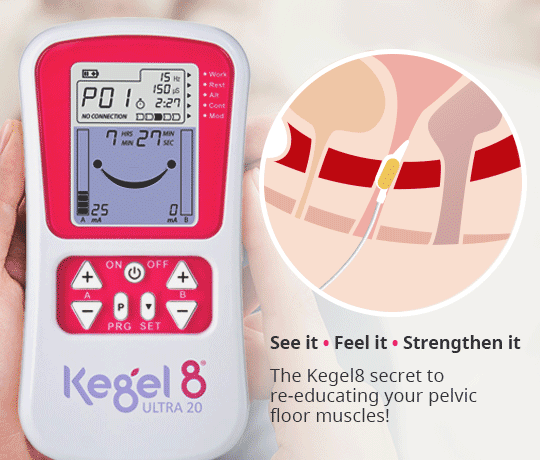
Creator of the internationally popular Squeezy App Myra Robson gives her expert advice on keeping your bladder happy...
Unhappy Bladder
It is estimated that 2.5 to 3 million women in the UK alone suffer with incontinence, from those little 'leaks' to much worse and unfortunately a lot of women think it is just part of getting older or having a baby. Incontinence is not something you should live with whatever your age!
There are different types of incontinence, including:
-
- Urge Incontinence - Your body says you need the loo now but urine leaks before you're ready, this is usually due to an overactive bladder.
- Stress Urinary Incontinence - This happens when your muscles weaken and are no longer able to support your bladder meaning wet knickers and padding the problem!
- Overflow Incontinence- This is when you can't fully empty your bladder leading to the overflow of urine, often the bladder doesn't feel 'full' so you are unaware that you need the loo, which can cause dribbling during the day and wetting the bed at night. You can also suffer with a mixture of these!
What Can be Done?
When you are suffering with incontinence, it really knocks your confidence and as it isn't really talked about you can feel alone. Here Myra shares her expert advice on how bladder training can help you.
"The purpose of bladder training is to learn to control the desire to pass water, so that a more normal pattern is achieved, without urgency, frequency or leaking. It should be possible to get through the night without getting up more than once to go to the toilet. (Twice is normal after 70 years of age). Plan your trips to the toilet to be regular and timed. Choose the length of time you are comfortable waiting before going to the toilet. This may be as little as 20 minutes, for example. If you have completed a bladder diary then choose the smallest time interval on your diary sheet between trips to the toilet. Go to the toilet first thing in a morning, regularly at each set time interval and last thing at night. Every three to four days, increase the gap by 15 minutes until you are comfortably going to the toilet every 3 -4 hours."
Vitamins for Pelvic Health
Here at Kegel8 we have been researching different supplements and the benefits they have on the pelvic floor alongside pelvic floor exercise. Founder and Managing Director, Stephanie Taylor tells us more: After months of research we are delighted to be able to provide some fantastic supplements that work alongside your Kegel routine.
Vitamin D3 and K2 protects against muscle wastage, helping the pelvic floor stay strong and healthy, it has also been shown to increase skeletal muscle efficiency and with the pelvic floor muscles being part of the skeletal muscles it helps with disorders like incontinence and pelvic organ prolapse. Take Vitamin D3 WITH Vitamin K2 - the combination of Vitamin D3 and K2 (not K3, which is typically a reference to a synthetic compound not used in dietary supplements) is often recommended for supporting bone health and, by extension, a stronger pelvic floor. Here's why taking them together can be beneficial:
-
Enhanced Calcium Absorption and Utilization: Vitamin D3 is essential for the absorption of calcium in the gut, which is crucial for maintaining strong bones and muscular function, including the pelvic floor muscles. Without adequate vitamin D3, your body cannot absorb calcium effectively, no matter how much you consume.
-
Proper Calcium Distribution: Vitamin K2 helps to regulate the body's use of calcium, ensuring that it is deposited in the bones and teeth where it is needed, rather than in soft tissues or arteries. This process is important because it helps to maintain bone density and strength, providing a stable structure for the pelvic floor muscles to attach to and function properly.
-
Synergistic Effect for Bone Health: These vitamins work in tandem not just for bone health but for overall muscle function and health. Strong bones support strong muscles, and the pelvic floor muscles are no exception. When the bones are nourished with adequate calcium thanks to vitamin D3, and that calcium is correctly utilized because of vitamin K2, the pelvic floor muscles can function more effectively.
-
Pelvic Floor Muscle Support: The pelvic floor muscles support several vital organs and play a crucial role in urinary and fecal continence, as well as sexual function. The integrity of these muscles is partially reliant on the strength of the surrounding bones and a good supply of calcium, which vitamin D3 and K2 support.
-
Hormonal Balance and Muscle Function: Vitamin D3 functions like a hormone in the body and is involved in muscle function and strength. There is evidence to suggest that adequate levels of vitamin D3 can help prevent muscle weakness and may play a role in preventing conditions like pelvic floor muscle dysfunction.
-
Reduced Risk of Osteoporosis and Pelvic Floor Disorders: Osteoporosis can lead to fractures in the pelvic bones, which in turn can affect the integrity and strength of the pelvic floor muscles. By taking vitamin D3 and K2, you may reduce the risk of osteoporosis, and thus, the risk of related pelvic floor disorders.
It's important to note that while vitamins D3 and K2 can be beneficial for pelvic floor health, they are part of a larger picture that includes regular exercise, such as Kegel exercises, a balanced diet, and overall healthy lifestyle choices. As with any supplement, you should discuss with a healthcare provider before starting to ensure it's appropriate for your individual health needs.
D - Mannose is a simple sugar molecule found in fruits like cranberries and when it is present the bacteria attaches itself to it rather than to the bladder wall and can flush out 90% of urinary tract infections!
Collagen helps keep muscles strong and is vital in the anti ageing process that affects your pelvic floor muscles.
Calmer Bladder Formula using Pumpkin Seed OIl is highly effective. The Calmer Bladder Formula by Osalis, available through Kegel8, taps into the therapeutic properties of pumpkin seed oil extract to offer relief for those dealing with a sensitive or overactive bladder. This product is designed to help manage symptoms such as frequent urination, urgency, and the discomfort that can accompany an active bladder.
Here's how the pumpkin seed oil extract in the Calmer Bladder Formula works:
-
-
Muscle Relaxation: The magnesium in pumpkin seed oil can help relax the bladder muscles, which may reduce spasms and the urge to urinate frequently.
-
Anti-Inflammatory Effects: The omega fatty acids in pumpkin seed oil possess anti-inflammatory properties that may reduce bladder irritation, which is often a cause of sensitivity.
-
Hormonal Support: Phytoestrogens in the pumpkin seed oil may help support hormonal balance, which is particularly beneficial for bladder health in postmenopausal women.
-
Antioxidant Protection: Antioxidants like vitamin E help protect the bladder lining from oxidative stress, which can exacerbate bladder sensitivity.
-
Phytosterol Content: These plant-based compounds can support the strengthening of pelvic floor muscles, enhancing overall bladder control.
-
Read more about supplements that can boost your pelvic health.
About Myra Robson Pelvic Floor Physiotherapist and Award Winning Squeezy App creator
Myra Robson is a Senior Women's Health Physiotherapist in London. She specialises in women's pelvic health issues including pelvic organ prolapse (POP), pelvic floor dysfunction, chronic pelvic pain and bladder and bowel dysfunction. Myra shares the same passion for pelvic health as us here at Kegel8 and is keen to spread the word about how important pelvic health is for both women and men. In 2013 Myra released the Squeezy App, which is an app designed so that women will remember to do their Kegel exercises and since its release over 65,000 apps have been sold internationally!






